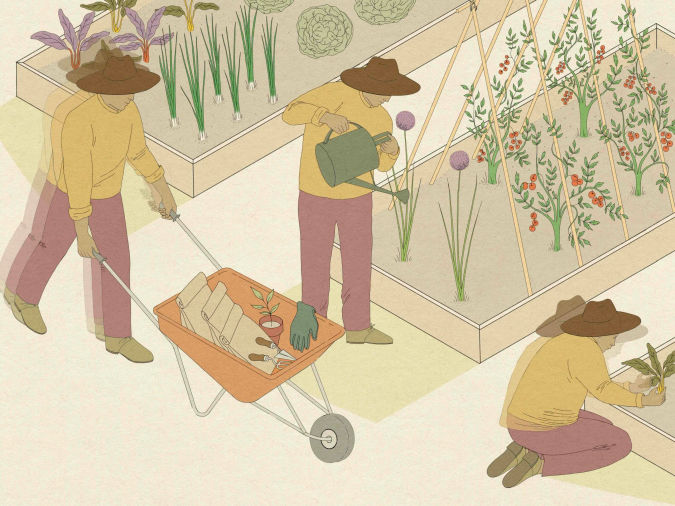Part One: Living Environment | Alzheimer's and Memory Care
When you’re making a personal visit to an assisted living community, take every opportunity you have to ask questions about Alzheimer’s and memory care.
It may be helpful if you divide your questions between a few main topics: Living Environment, Engaging Activities, Staff Training and Education and Quality Assurance.
In this installment of a three-part series, we’ll help with things you should look for in a living environment that will help your family member live well.
Look at the Surroundings
First, take a look around the community and observe the residents. Are the residents engaged in elementary activities, or are they living full, enriched lives in an environment that encourages grown-up engagement? Are they well-groomed and dressed neatly? They should be.
Walk the Community
Take a moment to walk the community. Is the space welcoming, vibrant and purposefully designed to accommodate residents with memory impairments? Residents with memory impairments may wander to help relieve stress, boredom, relieve discomfort or pain. An ideal design of a memory care environment would include opportunities for residents to walk within the secured environment and access to outdoor space (during appropriate weather).
Safety
You want to feel confident that your loved one is safe, and also that they are free to move about with exposure to sunlight, plants, birds and other things that make them happy. You want to feel confident that your loved one is safe, and also that they are free to move about with exposure to sunlight, plants, birds and other things that make them happy. You should get the sense that your loved one will feel free and relaxed, rather than confined and anxious.
To this end, consider whether the staff greets and welcomes you with open smiles. That’s a pretty good indicator of a positive environment. If there is tension in the air, you can generally see it on staff members’ faces.
Safety, of course, is of utmost concern. It’s easy to see the signs of a safe neighborhood:
- Do the doors promptly re-secure when you enter or exit?
- Are all doors secured to prevent wandering in unsecured spaces?
- Are there handrails in the hallways to aid in balance?
- Is there enough space for the number of residents who live there to comfortably participate in activities and physical exercise?
- What about power outages or plant emergencies, such as a fire? Is there a defined evacuation plan? How are the residents protected during events such as these?
- Are windows secured – specifically, are the windows in each resident’s apartment secure?
Ask questions about the community’s call system and the staff’s ability to respond timely to your family member’s needs. Staff carry pagers and/or radios with them as means to communicate with each other. Pagers alert staff when something unusual happens (a door opens that generally shouldn't, a door leading out to the courtyard or an alert button/pendant).
Another safety feature is systematic and routine checks on residents to be sure they are okay. The need for status checks and their frequency are based on each resident’s service plan. Certainly, basic cleanliness is worth considering as well. Are all of the rooms and open areas clean? Are there any lingering odors? What about the dining room? Is it clean and comfortable?
A supportive community will always promote independence by offering their residents choices. Simple choices work best for those with memory impairments. For example, a choice between a blue shirt or a yellow shirt versus choosing any shirt from their closet. We pride ourselves on offering our Life Guidance®residents the same dining experience as in Assisted Living. Pay particular attention to the dining experience, the quality of food the community offers and if they adjust their menu selections to accommodate the changing needs of the residents. Stay tuned for Part Two of the series, which will focus on Engaging Activities and their role in the lives of residents with memory impairments.
You might also like
Want to learn more about life at Atria Senior Living?


